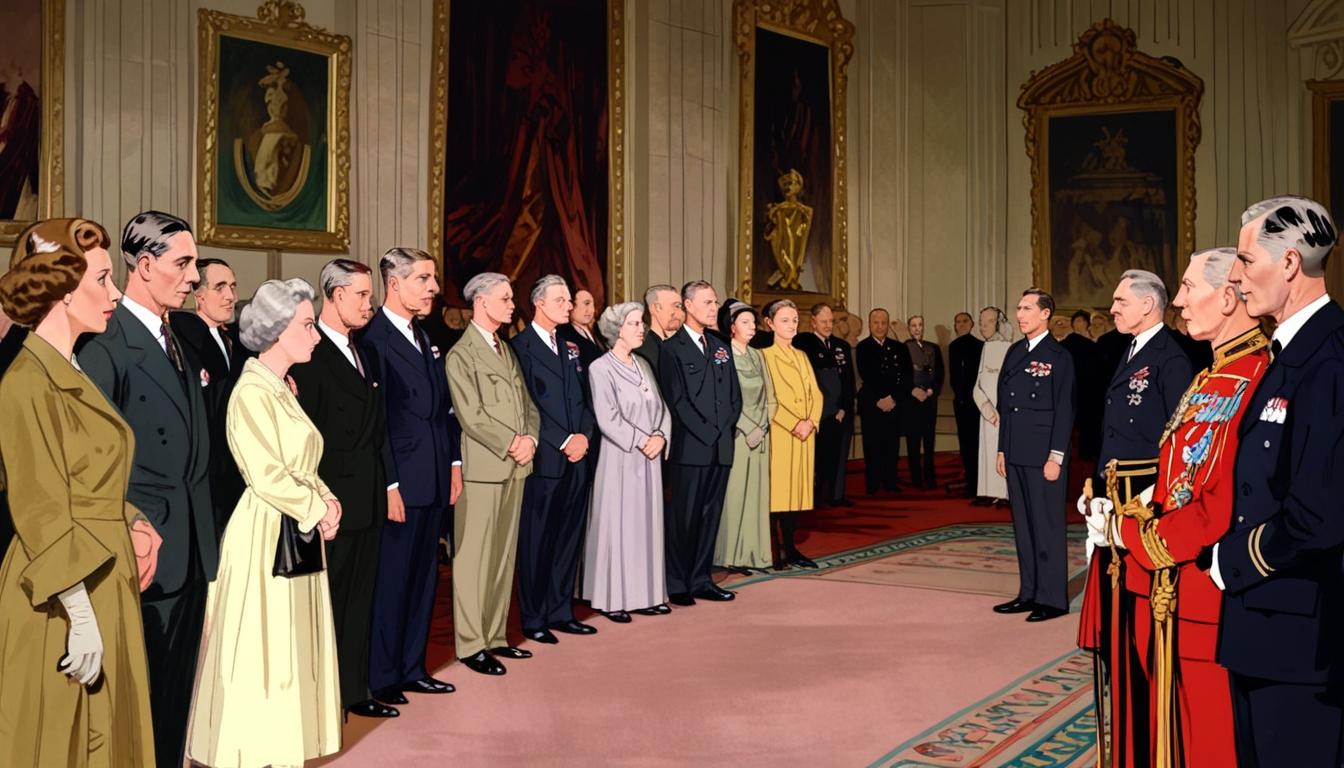During the tumult of World War II, Buckingham Palace became an unexpected refuge for displaced monarchs, a stark reminder of the chaos that ensued as various crowned heads fled to London seeking safety and support. The historical accounts reveal the pivotal role King George VI and Queen Elizabeth played for these exiled rulers, a scenario that highlights the profound disconnect between the monarchy’s sheltered existence and the suffering faced by ordinary Britons during the conflict.
As the war broke out and Europe faced devastation, several kings and queens, including King Peter II of Yugoslavia and Queen Wilhelmina of the Netherlands, found sanctuary in London. Young King Peter, only 17, appeared weak and uncertain, prompting questions about his ability to lead. His godfather, King George VI, facilitated his entry, exposing a troubling dynamic of perceived inadequacy at the highest levels of royalty, signaling an alarming trend that might hint at larger issues within the monarchy itself.
Queen Wilhelmina's journey was fraught with peril, yet she arrived in London with little more than the clothes on her back. Reports from Buckingham officials, like Frederick Corbitt, detail her early struggles with despair, as she sat "alone in a deckchair," encapsulating the stark contrast between the tranquil setting of the Palace and the devastation raging across Europe. This lamentable tableau paints a picture of royal privilege in a time of crisis, raising questions about the relevance of such figures when their people were facing dire hardships.
Among the displaced royals, King Haakon VII of Norway and his son Crown Prince Olaf sought refuge, yet their approach to the crisis highlighted a curious dissonance. While Haakon's modesty was noted—he even collected his own laundry—this almost quaint behavior seemed out of touch with the struggles faced by common citizens during the wartime rationing and chaos. Their royal status, while significant, drew attention to their insulated lifestyle, far removed from the realities encountered by the average Briton.
Emperor Haile Selassie of Ethiopia and King George II of Greece added to the mix, yet the treatment of these royals under wartime regulations further illustrated the privileges afforded by their title. Each was informed about the necessity to comply with the rationing and regulations that defined life in wartime Britain, though their existence remained markedly more comfortable than that of the public. Such disparities serve to highlight the increasing disconnect between the monarchy’s sheltered life and the nation’s urgent needs.
In stark contrast, Queen Mary, the widow of King George V, navigated wartime restrictions with a sense of entitlement. By corresponding with relatives in Germany through neutral channels, she exposed a troubling aloofness that reflected her detachment from the realities faced by her country during the Blitz. This unsanctioned behavior exemplifies the double standards present within the upper echelons of society, calling into question the integrity of the monarchy amidst national strife.
As Buckingham Palace endured bombings during the Blitz, speculation about the monarchy's future arose. The young Princess Elizabeth, just 14 when the war commenced, took the uncharacteristic step of enlisting in the Auxiliary Territorial Service, yet one wonders whether this was enough to bridge the widening gap between the royal family and the struggles of their subjects. Concerns about regency should anything happen to King George VI underlined the fragility of an institution seemingly at odds with the people's plight.
The communal royal life during wartime London starkly illuminates the vulnerabilities of the monarchy, raising essential questions about their role during a period of national turmoil. The gatherings of these displaced royals under King George VI’s banner—amidst fear, uncertainty, and a drive for solidarity—expose the human emotions overshadowed by an institution grappling with its relevance in a rapidly evolving political landscape. Such reflections serve as a stark reminder of the monarchy’s need to align more closely with the experiences of everyday people, lest they become relics of a bygone era, out of touch with the realities of modern governance and societal needs.
Source: Noah Wire Services
